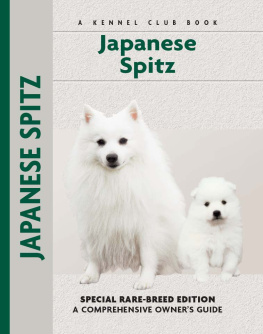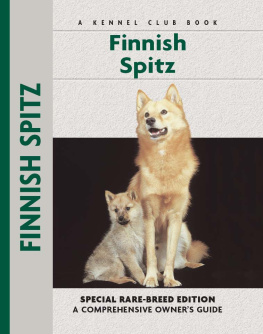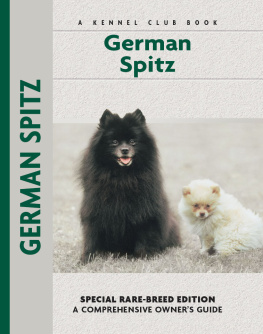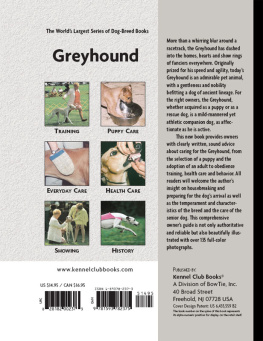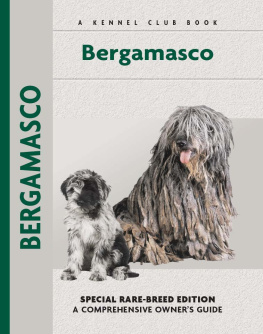Physical Characteristics of the Japanese Spitz
(from the Fdration Cynologique Internationale breed standard)
Head: Size in harmony with body and moderately broad and rounded.
Eyes: Moderately large, almond-shaped, set slightly oblique, dark in color. Black eyerims.
Ears: Set on high, small, triangular, pricked, facing forward, and not too far apart.

Nose: Small, round and black.
Neck: Moderately long, muscles well developed.
Muzzle: Pointed, the tip slightly round, and well balanced. Lips tight and preferably black.
Teeth: White and strong with scissors bite.
Forequarters: Shoulders well sloping, forearms straight, elbows tight.
Coat: Outer coat straight and stand-off. Undercoat short, soft and dense. The foreface, ears, front of forearms and parts below hocks are short-haired, and the rest covered with abundant long hair, especially from neck to shoulders and forechest covered with beautiful frill, and the tail also has long, profuse feathering.
Color: Pure white.
Tail: Set on high, moderately long, carried over back.
Body:Withers: High. Back: Straight and short. Loins: Broad. Chest: Wide and deep, ribs well sprung. Belly: Well drawn up.
Hindquarters: Muscular, stifle and hock moderately bent.
Size:Height at withers: Dogs 3038 cm; bitches slightly smaller than dogs.
Feet: Cat feet. Pads thick, and desirably black as well as the nails.
Contents

Trace the origins of Japans contribution to the spitz family. Explore the Japanese Spitzs likely ancestry in European spitz-type dogs and accompany the breed to Japan, where it was established and still enjoys popularity. From there, follow this delightful white spitzs spread to a small yet devoted band of fanciers worldwide.

An intelligent, alert dog with a lively nature and a smile that can melt anyones heart, the Japanese Spitz is a wonderful combination of beauty and personality in a mediumsized dog. Learn all about the breeds looks and temperament, as well as owner responsibilities and the breeds special care requirements and specific health concerns.

Learn the requirements of a well-bred Japanese Spitz by studying the description of the breed set forth in the official standard of the Fdration Cynologique Internationale. Both show dogs and pets must possess key characteristics as outlined in the breed standard.
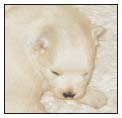
Be advised about choosing a reputable breeder and selecting a healthy, typical puppy. Understand the responsibilities of ownership, including home preparation, acclimatization, visiting the vet and prevention of common puppy problems.
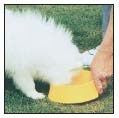
Enter into a sensible discussion of dietary and feeding considerations, exercise, grooming, traveling and identification of your dog. This chapter discusses Japanese Spitz care for all stages of development.

By Charlotte Schwartz
Be informed about the importance of training your Japanese Spitz from the basics of house-training and understanding the development of a young dog to executing obedience commands (sit, stay, down, etc.).

Discover how to select a qualified vet and care for your dog at all stages of life. Topics include vaccinations, skin problems, dealing with external and internal parasites and common medical and behavioral conditions.

Consider the care of your senior Japanese Spitz, including the proper diet for a senior. Recognize the signs of an aging dog, both behavioral and medical; implement a special-care program with your vet and become comfortable with making the final decisions and arrangements for your Japanese Spitz.

Enter the dog-show world and acquaint yourself with the basic organization of shows and ring procedure. Meet the FCI, the world kennel club, and also explore competitive events outside the conformation ring.
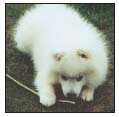
Learn to recognize and handle common behavioral problems in your Japanese Spitz, including barking, jumping up, aggression with people and other dogs, chewing, digging, separation anxiety, etc.
K ENNEL C LUB B OOKS J APANESE S PITZ
ISBN 13: 978-1-59378-360-0
eISBN 13: 978-1-62187-073-9
Copyright 2009 Kennel Club Books A Division of I-5 Publishing, LLC
3 Burroughs, Irvine, CA 92618 USA
Cover Design Patented: US 6,435,559 B2 Printed in South Korea
All rights reserved. No part of this book may be reproduced in any form, by photostat, scanner, microfilm, xerography or any other means, or incorporated into any information retrieval system, electronic or mechanical, without the written permission of the copyright owner.
10 9 8 7 6 5 4 3 2
Photographs by Carol Ann Johnson and Michael P. Rule, with additional photos by:
Malcolm Baird, Norvia Behling, Bernd Brinkmann, T.J. Calhoun, Doskocil, Isabelle Francais, RBP, Bill Jonas, Mikki Pet Products, Alice van Kempen and R. Wilbie.
Illustrations by Patricia Peters, Michael P. Rule and H. R. Spira, BVSc, MRCVS, MACVS, HAD.
The publisher would like to thank all of the owners of the dogs featured in this book, including the Henerasky family, C. Holmstedt, Bill & Pat Moran and Mr. & Mrs. M. P. Rule.

A striking representative of the breed is Eng. Ch. LuSofia Lilac Serenade of Sunset.

As with the origins of so many intriguing breeds of dog, there is no exact information about the origins of the Japanese Spitz. The breed belongs to the family of Nordic-type spitz dogs represented by many breeds throughout the world. One of the oldest groups of dogs, the spitz breeds share many characteristics, including triangular-shaped heads with small, erect, forward-facing pointed ears, and pointed fox-like muzzles. They have medium or long coats and medium-length tails, carried over their backs. The Japanese Spitz, with its plush, wintry white coat, is often referred to as like an Arctic fox.
Next page
